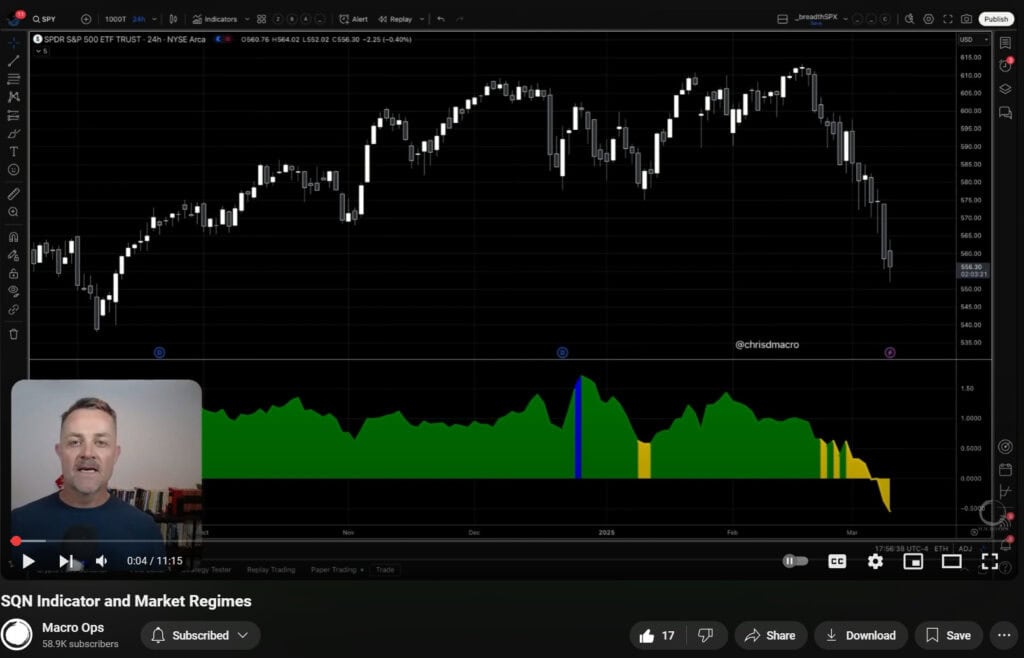You must understand the following: In order to master a field, you must love the subject and feel a profound connection to it. Your interest must transcend the field itself and border on the religious. ~ Robert Greene, “Mastery”
Alex and Brandon here.
April was a good month for the MO Portfolio. We returned a little over 12%, far outpacing the S&P 500’s 4% return. Please note that our performance figures will vary significantly from the broader market indices. Sometimes to our benefit and other times to our detriment.
Year-to-date, the MO Portfolio has returned ~38.75% compared to the S&P 500’s 14.42% return (~2.7x greater than S&P 500).
These performance swings are a feature, not a bug, in our quest for long-term outperformance. For example, last month, our portfolio lost 9% while the S&P gained 1.82%.
You should judge our service’s trading success by its long-term performance.
This weekend we’re diving into:
- Top 5 Performers
- Bottom 5 Detractors
- Micron DOTM Sale
- Palladium Long
Quick housekeeping note before we begin — the top five and bottom five companies only include positions bought, held, or sold during April.
Alright, let’s get after it.
Top 5 Portfolio Performers
- Grayscale Ethereum Trust (ETHE): +47.08%
ETHE crushed it, rising nearly 50% during the month. We bought our initial stake on 04/01 at $18.48/share. A few weeks later, we converted our long GBTC position into more ETHE at an average cost of $26/share.
We’re now sitting on a 15% position with an average cost basis of $21.47.
Like GBTC, we’ll look to clip some profits as the price appreciates while tightening up our stops. However, we don’t want to give back our gains, which currently sit at ~90% from our original cost basis.
- Bioceres Corporation (BIOX): +42.18%
BIOX is an Argentinian-based Ag-tech play on our secular commodity/agriculture bull thematic. The company voluntarily uplisted to the NASDAQ on April 14th.
Uplisting is a smart long-term move that will allow more US investors to gain access to the company. We took 25% profits after the stock gapped ~30% in a week. That said, we’re keeping our stops wide because we want to build this into a more significant position over time.
- Hoteles City Express (HCITY.BMV): +31.35%
HCITY jumped 31.35% during the month. We bought our stake on 4/12 at a ~MXN 6.19, making it a 10% position at cost. So yes, we got lucky with the entry, but we’re holding this for the long haul. The company has a chance to 2-3x – at least – from the current price over the next couple of years.
You can read our original write-up on the business here.
- Betterware de Mexico (BWMX): +21.70%
BWMX is our Mexican direct-to-consumer household goods business that continues to perform well. The company announced Q1 2021 earnings and crushed it. Check out some of these figures:
- Revenue increased 205%
- Gross Profit increased 212%
- Operating Income increased 295.7%
- Net Income increased 339%
These are SaaS-like growth numbers. Yet, the company trades at 3x sales and 11x EBIT. One of the benefits of fishing in markets where others don’t even bother to look.
You can read our original write-up here.
BWMX is currently a 5% position. The stock has long-term compounder written all over it. We’ll look to add on future consolidations.
- HeadHunter Group PLC (HHR): +19.52%
HHR is Russia’s top job listing website with one of the broadest moats we’ve seen. You can read our deep dive on the stock here.
We trimmed 25% of our position as the stock ran up 25% over a few weeks. Optically, HHR is now the most expensive stock we own (18x sales). And because of the macro environment we believe we’re transitioning to, expensive growth names like HHR are likely to struggle going forward. We’ll likely be taking profits soon.
Bottom 5 Portfolio Detractors
- Antero Resources (AR): -16.94%
AR explores, develops, and sells natural gas and various NGL products. The company generated $519M in EBITDAX and $416M in free cash flow during Q1. In addition, AR used its FCF to pay down ~$433M in debt.
At the end of the quarter, the company reduced its net leverage ratio to 2x. By 2022, AR expects to reduce its net debt to under $2B. At that point, the company can use its free cash flow to either pay dividends or buy back stock.
We sold 75% of our position during the month as the stock had risen 60% from our cost basis. This type of cash generation plus deleveraging is a powerful combo. AR’s chart is setting up for another breakout and we remain bullish on NG. We’ll be adding back to this position on Monday.
- Centrus Energy (LEU): -4.74%
LEU is a play on the bull cycle in uranium, along with a call option on SMR/advanced reactor adoption through its HALEU development. Despite being down almost 5% during the month, we remain very bullish. You can buy this business for <1.5x sales and 9x EBITDA.
We’ll be adding to this position soon.
- Manolete Partners (MANO.LSE): -3.47%
MANO is UK’s leading specialty finance litigation company. They command ~67% of the TPF market. MANO plays a crucial role in returning funds to creditors, particularly the HMRC. The company buys 80%+ of their claims, giving them complete control of the outcome. The average case settles in 11.5 months, with MANO getting paid ~12 months post-settlement.
You can read our deep-dive on the company here.
The stock continues to drift lower as it forms a long-term inverse H&S pattern. Word of caution to new Collective members, this stock is highly illiquid. It can take a while to buy a position depending on the size of your account.
- Qualitas Controladora (Q.BMV): -1.34%
Qualitas (Q.BMV) is Mexico’s leading auto insurance business. The company operates without any real competition. As a result, it boasts industry-leading Combined Ratios and Loss Ratios. It’s run by its founder who owns a decent chunk of the business. The stock trades at <10x normalized earnings.
You can read the full report here.
The short-term risk is that you’re paying “peak COVID” earnings where people didn’t drive (hence, fewer accidents). But, long-term, Q has one of the strongest drivers of revenue and earnings growth in our portfolio.
In 2019, Mexico officially mandated third-party insurance for all motor vehicle drivers. In other words, Qualitas grew its company without the standard insurance mandate we expect (like here in the States).
When it comes time for Mexican drivers to pick insurance, odds are they’ll choose Qualitas.
- Rocket Companies (RKT): -0.44%
RKT is the US’s largest online mortgage lender. Since 2009, the company’s grown from 1.3% market share to 9%. RKT’s grown by having the best online application experience with the quickest turnaround time. Most mortgage companies take days (or weeks!) to process applications. RKT can instantly verify employment and income while offering same-day pre-approval to qualified buyers.
You can read our original thesis here.
We bought our initial stake at $24/share and sold a third of that in March during the manic short squeeze. As a result, the stock sits at a ~2.5% position.
Note: RKT sold off hard after Q1 earnings and closed below our initial stop-loss price. Therefore, we will cut the position on Monday (05/10) and look for another entry point.
There were two trades during the month that helped crystalize our 12% return:
- Micron DOTM Call Option Sale
- Palladium Long Trade
Let’s break each down.
Micron DOTM Sale & Rollover Into 2023 Calls
We exited our Micron January 2022 $100 calls late last month, booking a 418% return. At face value, a 418% return looks fantastic until you realize that that same position was up 1,200% during the month — we’ve since rolled a portion of these profits into the 2023s.
Hindsight is 20/20, and we want to protect ourselves from “resulting” based on a single trade. So how do we think about this?
We nailed the execution by expressing our bullish semiconductor thesis with a highly asymmetrical payoff instrument. Should we have sized bigger? Yes. We made the DOTMs too small of a position at the start, far below what we should’ve given the strength in our conviction.
Finally, we should’ve taken some of our position off the table once it reached 1,200% returns. Going forward, we want to hardcode specific profit-taking milestones.
Collective member @J Ed who’s one of the smartest options traders we know, shared this insight in our Slack the other week, which sums up well how we should approach this going forward.
If you are very bullish long term, I think there are several ways to play this, from longer to shorter time-frames.
- Spreading out the calls (vertical) with the objective of opening 23s (or doing it simultaneously, you just have to do it when the skew is favorable). You can just wait for the 12-month market to hit so you can close the spread and get long-term treatment on the longs, and a short-term shield for the short calls (only applies if it keeps going up of course). I’m not clear if you can carry this across end of year though, so make to check with your CPA.
- Calendar spreads — just selling short-term calls against the position when it gets overextended on a daily basis.
- Shorting against the position, which is more of an intraday strategy. I’ve been doing 3, shorting the common against my calls on a regular basis, and have done decently. Pretty easy to spot when it gets overextended intraday, and you can short it for a buck or two at a time, risking 50 to 75c. I’ve raised around 500bps in cash so far this year. Normally risk 20-40bps to make 80-100bps. I don’t like to short more than half the delta on the calls, and you have to be willing to liquidate some of your calls if it moves too much against you (which is unlikely to happen if you’re intraday only). Once it breaks out from its current range, you’ll probably have to wait for it to settle in a new zone to try this, though.
I believe the most exciting thing about these positions is winding up massive delta exposure (vs the initial capital outlay) in your portfolio, and you can use this in many ways to your advantage. You can take big swings to the downside at a very low cost to generate profits (if it moves against you, there are no marginal losses from the hedge, as long as you’re willing to liquidate some of the DOTM along with closing out the hedge), collect short-dated premium, or you could roll over to a later date while maintaining the delta, which is exactly what we did in the MO portfolio.
If you notice, when the rollover happened the delta of the 22’ 100s was around the same as the 23’ 125s (both ~40 if I recall), and the cost was within 10%. However, the gamma exposure was cut dramatically, which means the position will be less volatile (delta will move less with the px changes) so it is a very good way to ride out expected choppiness in the market if you want to hold the position.
The alternative version to the trade, if you’re doing this in a taxable account, is to keep the 100s and sell the 105s to fund the 23 125s, and wait for the 12-month mark to hit on the first purchase of the 22’ 100s to liquidate the 100-105 spread.
You have a different type of exposure, but it’s mostly tax-related — if the price crashes, the bulk of the gain is going to be ST, but this was gonna happen anyway if you sold. The other side of the coin is that, if it keeps climbing you’ll have a pretty sizable tax shield with short-term losses (keep in mind that you may not be able to carry this over across calendar year end, but you should be able to do it if you’re already in the same calendar year as when the 12-months will hit, though check w/ CPA).
Just be mindful and do this selectively… if you’re doing this all over the place you may wind up with some nasty surprises (all tax-related), which is why I’m careful about recommending this trade openly.
Always keep the time of year in mind (the earlier in the year you are able to close out the spread the more visibility you’ll have) and never forget the wash-sale rule, which means be careful with trades within 31 days of booking the loss, especially if it’s a name you’re looking to keep playing on the long side.
Conclusion
All of us have access to a higher form of intelligence, one that can allow us to see more of the world, to anticipate trends, to respond with speed and accuracy to any circumstance. This intelligence is cultivated by deeply immersing ourselves in a field of study and staying true to our inclinations, no matter how unconventional our approach might seem to other.
Through such intense immersion over many years we come to internalize and gain an intuitive feel with the rational processes, we expand our minds to the outer limits of our potential and are able to see into the secret core of life itself. We then come to have powers that approximate the instinctive force and speed of animals, but with the added reach that our human consciousness brings us. This power is what our brains are designed to attain, and we will naturally led to this type of intelligence if we follow our inclinations to their ultimate ends.”
~ Robert Greene, “Mastery”
Markets are perhaps the most powerful forced evolutionary system in existence. Like Darwinian nature on speed… ruled by power-laws and in constant states of flux, they impel those who participate to either adapt and overcome or stagnate and die (figuratively speaking of course).
This is why our motto at MO is Trade, Learn, Evolve… We are drawn to markets because they force continuous learning, continuous adaptation, and continuous growth. Constantly working to play the game a little bit better each and every day, week, and month aligns the power of compounding growth behind numerous areas of our lives, both inside and outside markets.
We’ve had a decent year-to-date run in the MO port but there are still endless improvements to be made, things to learn, processes to be refined… and we’re looking forward to getting after it with all of you in the Collective.
Without continual growth and progress, such words as improvement, achievement, and success have no meaning. ~ Benjamin Franklin
Your MO Operators,
Alex & Brandon










